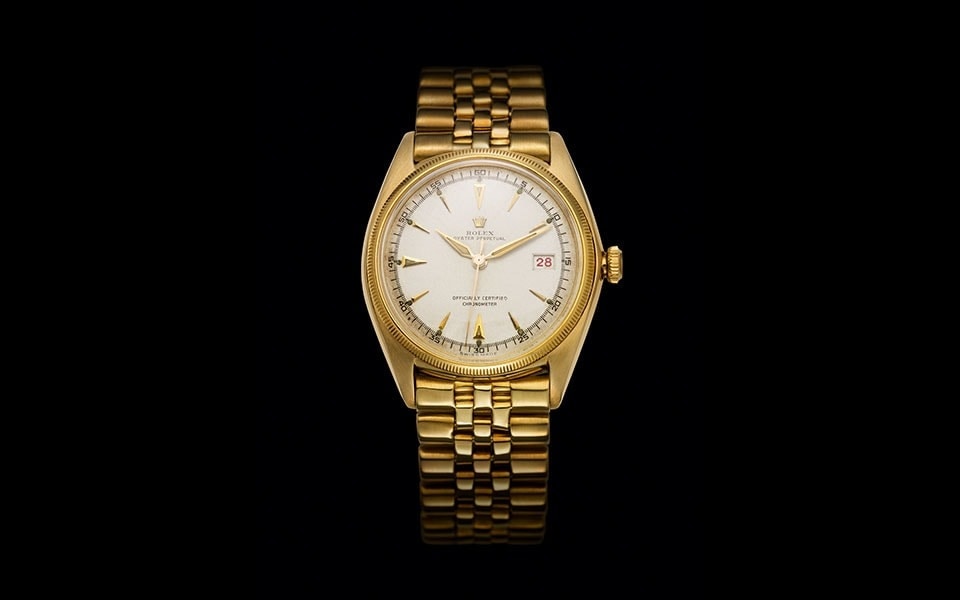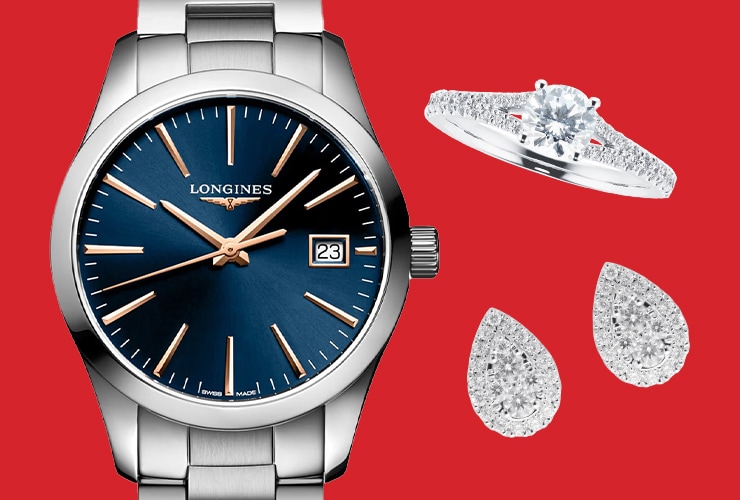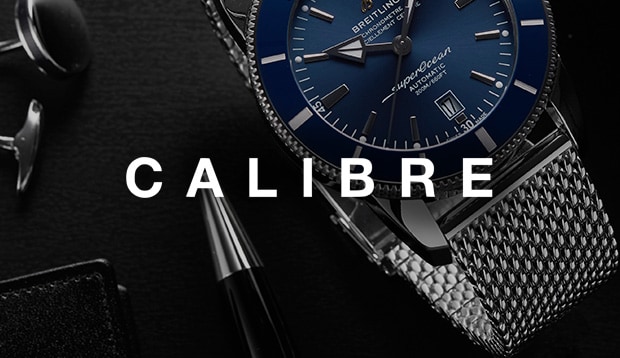-
SALE
Sale JewellerySale WatchesBy Price
-
Diamonds
By Category
-
Engagement
By Category
-
Weddings
Featured
- Jewellery
By CategoryBy Metal TypeBy GemstoneBy BrandBy Edit- Watches
By CategoryBy CollectionBy Luxury BrandBy Designer Brand- Rolex
FeaturedBy Collection- Rolex Certified Pre-Owned
- Brands
FeaturedBrands A-Z- Gifts
By CategoryBy PriceBy Popular Brand- Pre-Owned
By CategoryBy Brand- Sell Your Watch
Sell your watchWe will expertly assess your watch and offer you
a competitive and accurate valuation for the
watch you wish to sell to us.Free Instant Valuation
Drop off at any Showroom
Unrivalled Knowledge & Expertise- Editorial
- Jewellery
- Shop by Category
- SALE
- Diamonds
- Engagement Rings
- Weddings
-
Jewellery
- Back
- Jewellery Offers
- Shop All Jewellery
- Jewellery Home
- By Category
- By Metal Type
- By Gemstone
-
By Brand
- 886 by The Royal Mint
- Amor
- Bijoux Birks
- BOSS
- Calvin Klein
- Chopard
- Emporio Armani
- Fabergé
- FOPE
- FRED
- Georg Jensen
- Goldsmiths
- Gucci
- Jenny Packham
- Kiki McDonough
- Lauren By Ralph Lauren
- Mappin & Webb
- Marco Bicego
- MARIA TASH
- Messika
- Michael Kors
- Olivia Burton
- Pasquale Bruni
- Pomellato
- Repossi
- Roberto Coin
- Skagen
- Susan Caplan
- SUZANNE KALAN
- SWAROVSKI
- Ted Baker
- THOMAS SABO
- Tommy Hilfiger
- By Edit
-
Watches
- Back
- Watch Offers
- Shop All Watches
- Watches Home
- By Category
- By Collection
-
By Luxury Brand
- Rolex
- Rolex Certified Pre-Owned
- BALL
- Bamford
- Baume & Mercier
- Bell & Ross
- Blancpain
- Breitling
- Bremont
- Cartier
- CHANEL
- Chopard
- DOXA
- Frederique Constant
- Girard-Perregaux
- Glashütte Original
- Grand Seiko
- Gucci
- Hublot
- ID Genève
- IWC Schaffhausen
- Jaeger-LeCoultre
- Junghans
- Keris
- Longines
- MeisterSinger
- Montblanc
- Nivada Grenchen
- NOMOS Glashütte
- NORQAIN
- OMEGA
- Oris
- Panerai
- Piaget
- Rado
- RAYMOND WEIL
- TAG Heuer
- TUDOR
- Ulysse Nardin
- ZENITH
- By Designer Brand
- Rolex
- Rolex Certified Pre-Owned
-
Brands
- Back
- View All Brands
-
A-Z
- Rolex Watches
- Rolex Certified Pre-Owned
- 886 by The Royal Mint
- Accurist
- Amor
- Arnold & Son
- BALL
- Bamford
- Baume & Mercier
- Bell & Ross
- Blancpain
- Bijoux Birks
- BOSS
- Breitling
- Bremont
- BVLGARI
- Casio
- Calvin Klein
- Cartier
- Certina
- CHANEL
- Chopard
- Citizen
- Czapek
- DOXA
- Emporio Armani
- Encelade 1789
- Fabergé
- FOPE
- FRED
- Frederique Constant
- Garmin
- Georg Jensen
- Gerald Charles
- Girard-Perregaux
- Glashütte Original
- Goldsmiths
- Grand Seiko
- G-SHOCK
- Gucci
- Hamilton
- Hublot
- ID Genève
- IKEPOD
- IWC Schaffhausen
- Jacob & Co
- Jaeger-LeCoultre
- Jenny Packham
- Keris
- Kiki McDonough
- G-SHOCK
- Lauren By Ralph Lauren
- Longines
- Louis Erard
- Mappin & Webb
- Marco Bicego
- MARIA TASH
- Maurice Lacroix
- Michael Kors
- Messika
- Montblanc
- Nivada Grenchen
- NOMOS Glashütte
- NORQAIN
- Olivia Burton
- OMEGA
- Oris
- Panerai
- Parmigiani Fleurier
- Pasquale Bruni
- Piaget
- Pomellato
- QLOCKTWO
- Rado
- RAYMOND WEIL
- Repossi
- Roberto Coin
- Rolex
- Rolex Certified Pre-Owned
- Seiko
- Skagen
- Susan Caplan
- SUZANNE KALAN
- SWAROVSKI
- TAG Heuer
- Ted Baker
- THOMAS SABO
- Tissot
- Tommy Hilfiger
- TUDOR
- Ulysse Nardin
- Vivienne Westwood
- William Wood Watches
- WOLF
- ZENITH
- Gifts
-
Pre-Owned
- Back
- Shop Pre-Owned Watch Sale
- Shop All Pre-Owned
- Pre-Owned Home
- By Category
-
By Brand
- Rolex Certified Pre-Owned
- Pre-Owned Patek Philippe
- Pre-Owned TAG Heuer
- Pre-Owned Cartier
- Pre-Owned Jaeger-LeCoultre
- Pre-Owned Breitling
- Pre-Owned OMEGA
- Pre-Owned Longines
- Pre-Owned Tudor
- Pre-Owned IWC
- Pre-Owned Panerai
- Pre-Owned Blancpain
- Pre-Owned Breguet
- Pre-Owned Chopard
- Pre-Owned Rado
- Pre-Owned Vacheron Constantin
- Pre-Owned Zenith
- Sell Your Watch
- Editorial
- My Account
- Wishlist
- Store Finder
- Book an Appointment
- Help & Support
Date, Day-Date and Calendar watches
By The Watches of Switzerland Group | 4 minute read

Sometimes, a beautifully made timepiece does so much more than just tell the time. In fact, there’s everything from (somewhat controversial) date windows to annual calendar mechanisms – and some are even clever enough to adjust themselves every leap year. In this guide, we delve into the varying levels of this horological complication including Date, Day-Date and Calendar watches…
It’s a date: date watches
Many devoted watch connoisseurs have strong feelings about the humble date window – so much so that it even has its own hashtag: #nodate. This function (technically it’s not seen as a true watch complication) is a simple square window, often situated at 3, 4.30 or 6 o’clock, which displays the date of the month. For some watch purists, the little hole on the dial often interferes with the overall harmony of the design, and is the origin of all that Instagram ire. But ask many watch brands and they’ll tell you the date window is a hugely useful function, and one that many clients have come to expect, even in the age of the smartphone.
So where did the date window originate? Interestingly, it wasn’t until 1945 that the date function first appeared — relatively late for the centuries-old world of Swiss watchmaking — when Rolex unveiled the now-iconic Datejust. It was the first self-winding wrist chronometer to display the date in a window on the dial at 3 o’clock, giving the watch its name. The positioning of the date window on the right-hand side of the dial was significant: many people at the time wore their watch on their left wrist, meaning the date window could easily be seen underneath a shirt cuff. Since then, date windows have often been placed in this 3 o’clock position.
In early models, the date would begin to change hours before midnight. In 1955, Rolex addressed this issue by adapting the date-change mechanism to operate instantaneously. At the same time, the brand added the famous Cyclops lens to magnify the date for easy reading (legend has it that Rolex’s founder, Hans Wilsdorf, designed the latter for his wife, who found the date difficult to read). The date window was an instant hit with watch lovers thanks to the universal and enduring appeal of the Rolex Datejust — and it’s been a common feature on luxury timepieces ever since. Today, watch brands such as A. Lange & Söhne, IWC and Glashütte Original even flaunt the date function with their outsized or ‘grande’ date complications.

Clear as day: the day window
Rolex lays claim to another useful horological function: the day window. In 1956, it introduced the appropriately named Day-Date: the first waterproof and self-winding chronometer wristwatch to display the date and day of the week spelt out in full in a window on the dial. The date, as ever, was situated at 3 o’clock and the day window was placed prominently at 12 o’clock, just above the Rolex logo. It was an immediate hit, earning itself the moniker ‘The President’s Watch’ thanks to its eminent and high-profile wearers including John F Kennedy and Lyndon Johnson (it also featured a newly created bracelet, also called the President, featuring semi-circular three-piece links for pure comfort on the wrist).
Featuring a bespoke day display in a wide choice of languages, and only cast in precious metals, the Day-Date had immediate global appeal, and soon many other watch brands were following suit. Nowadays, watch brands such as Tudor, Breitling and IWC have produced their own functional versions of the day and date windows — and, of course, the Rolex Day-Date is still going strong.

On the agenda: Calendar watches
Moving on from the simple date and its day-date cousin, we get onto the more technical calendar complications: the annual calendar, the perpetual calendar and the complete calendar, which we’ve already touched on in another of our watch guides.
To recap, the complete calendar, sometimes referred to as the full calendar, displays the day, date, month, time and, sometimes, the phases of the moon on the dial, in keeping with the Gregorian calendar. These stunning watches need to be reset whenever there are fewer than 31 days in a month — in other words, five times a year. This is why complete calendars are regarded by many as the entry-level variant of this complication; still beautiful to look at, but not quite as sophisticated as other calendar watches.
Which brings us to the annual calendar and the perpetual calendar. Both these types of watches also display the hour, day, date, month and moon-phase. The main difference is that an annual calendar must be set manually once a year, while the perpetual calendar automatically adjusts itself, even from February 28th or February 29th to March 1st.

Patek Philippe Annual Calendar
The perpetual calendar, or quantième perpetual, will usually not need to be adjusted until the year 2100 – and only then because the calendar determines that 2100 will not be a leap year (as is the case with three ‘century’ years out of four). Given the extraordinary complexity of this, the perpetual calendar is revered as one of the pinnacles of haute horlogerie. It can take even the most skilled of watchmakers months to assemble a perpetual calendar mechanism, which contains gears that will only be used every four years. First invented by English watchmaker Thomas Mudge all the way back in 1762 (centuries before the much simpler date window would appear), it wasn’t until 1925 that it first appeared in a wristwatch created by Patek Philippe — using a movement that was originally made for a woman’s pendant watch in 1898. Patek Philippe is still the brand most closely associated with the lauded perpetual calendar complication, which to this day has retained a fresh, contemporary appeal.
Our Buyer's Highlights
Discover more date, day - date, and calendar watches here at Goldsmiths.
Sign Up For Calibre Newsletter
Get a round up of the latest stories from Calibre every month, directly to your inbox.
© 2025 Goldsmiths
Goldsmiths is a trading name of Watches of Switzerland Company Limited. Registered Office: Aurum House, 2 Elland Road, Braunstone, Leicester, LE3 1TT, Registered in England and Wales, Company number 00146087. Registered VAT Number 834 8634 04. Watches of Switzerland Company Limited acts as a broker and not a lender and offers finance from Secure Trust Bank PLC trading as V12 Retail Finance and PayPal UK Ltd, 5 Fleet Place, London, United Kingdom, EC4M 7RD trading as PayPal Credit. Watches of Switzerland Company Limited is authorised and regulated by the Finance Conduct Authority. Our registration number is 308710. *Credit is provided subject to affordability, age and status. Minimum spend applies. Terms and Conditions apply. UK residents only. Not all products are regulated by the Financial Conduct Authority and FOS protection will not be extended to unregulated agreements. Please note the Consumer Credit Act states that should your purchase / loan amount cost more than £30,000 you will not be covered under Section 75 of the Consumer Credit Act.
*Next day delivery available on most items. See product pages for more information.









